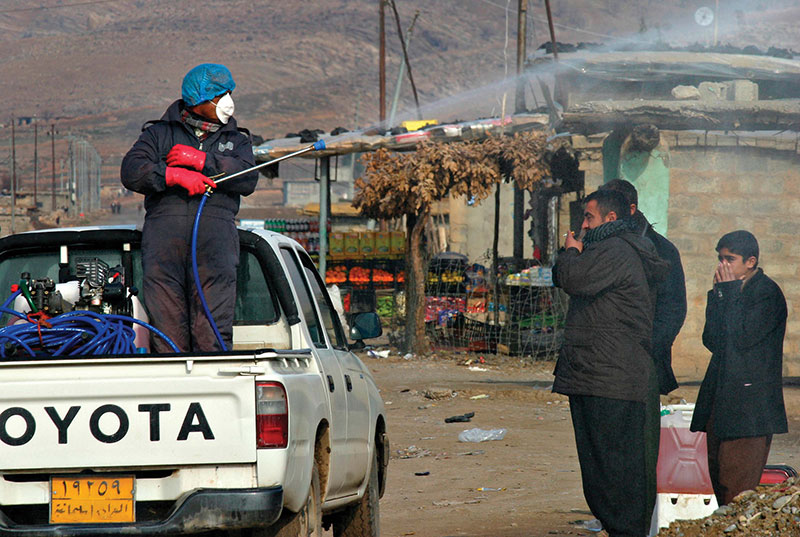Zoonosis << zoh uh NOH sihs >> is a disease that is transmitted from animals to human beings. Some zoonotic diseases cause only mild disease, but others can be serious and life threatening. Many serious infectious diseases that affect human beings, including COVID-19, influenza, Middle East respiratory syndrome (MERS), plague, rabies, severe acute respiratory syndrome (SARS), smallpox, tuberculosis, West Nile virus, yellow fever, and AIDS, began as zoonoses.

Any form of infectious agent, including bacteria, viruses, protozoa, and fungi, can cause a zoonotic disease in human beings. Wild animals serve as hosts (carriers) of various diseases that do not normally infect human beings. On occasion, such diseases can be transmitted to people. However, most zoonoses have developed from domestic animals or animals that live in close association with people, such as rats. Throughout history, by domestication and association with various animal species, human beings have been exposed to the many diseases carried and transmitted by animals. Zoonoses occur when disease-causing organisms are altered in ways that allow them to infect human beings and spread among them instead of, or in addition to, their natural hosts.
How zoonoses spread.
Some animal diseases may be transmitted to human beings through direct contact with infected animals. Other zoonoses may be transmitted through drinking water contaminated with animal waste or through eating raw or undercooked meat of infected animals. Fleas, ticks, mosquitoes, and other biting insects that feed on infected animals may also feed on people, transferring disease-causing organisms between them.
Children and adults with immune system disorders have a higher risk of contracting diseases from animals. After a person is infected, mutations (changes in the hereditary material) of the disease-causing agent can occur that enable the disease to spread to other human beings. For example, the influenza virus continually mutates after infecting different hosts, including ducks, pigs, and human beings. New varieties or strains of the virus with different characteristics are continuously created. Occasionally, a new strain of influenza virus appears and spreads rapidly among human beings in a worldwide epidemic called a pandemic.
Prevention and control.
It is often impossible to determine if an animal is ill with an infection that may spread to human beings. Infected animals may show no symptoms of illness. People should practice basic hygiene, such as washing hands after handling animals, to help prevent zoonosis. Pets should not be allowed to come into contact with food, eating utensils, or dishes. Owners should thoroughly clean the housing of infected animals and dispose of the animals’ waste as quickly as possible. Proper cooking of meat, fish, poultry, and eggs is an effective way to prevent infections from animal products. 
Many zoonoses can be controlled through the use of vaccines, antibiotics, and other drugs, and by taking other precautions. For example, vaccination of domestic animals for rabies has dramatically decreased the disease in the United States and most industrial countries. Other diseases are controlled by elimination of the animals or insects that spread the disease. For example, plague is rare in most regions of the world because of the control of rats and other rodents that are the natural hosts of the disease. Prevention and control of other zoonoses, however, continue to challenge health professionals. In addition, new zoonoses can appear. These new infections are highly unpredictable and have the potential to cause sudden epidemics of serious disease in human beings.
